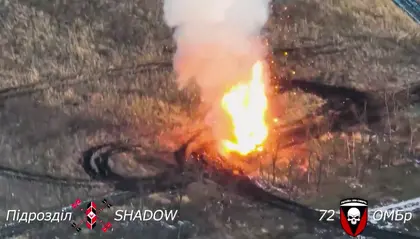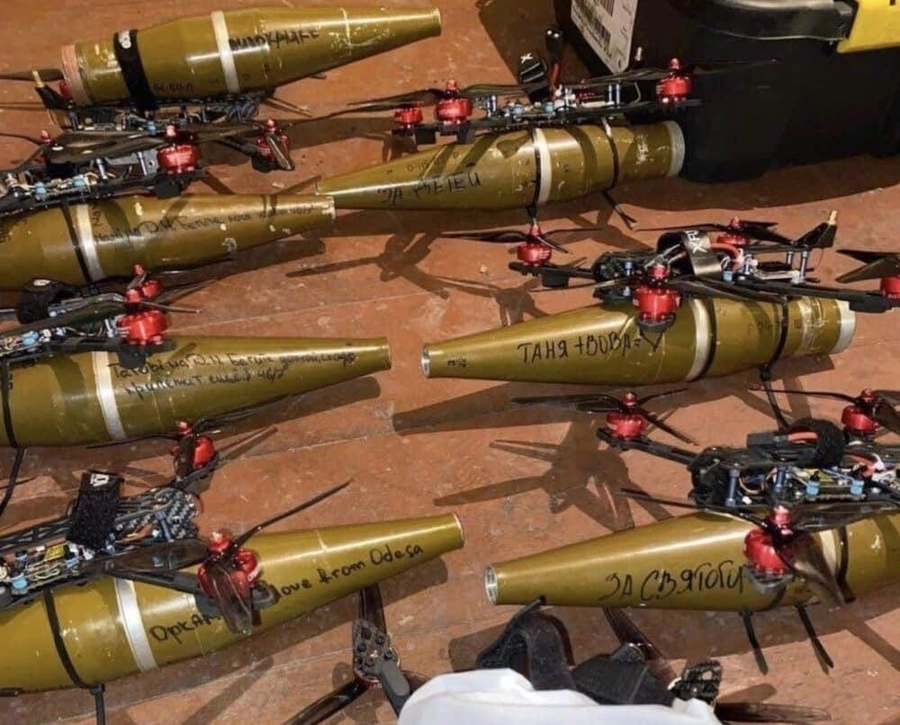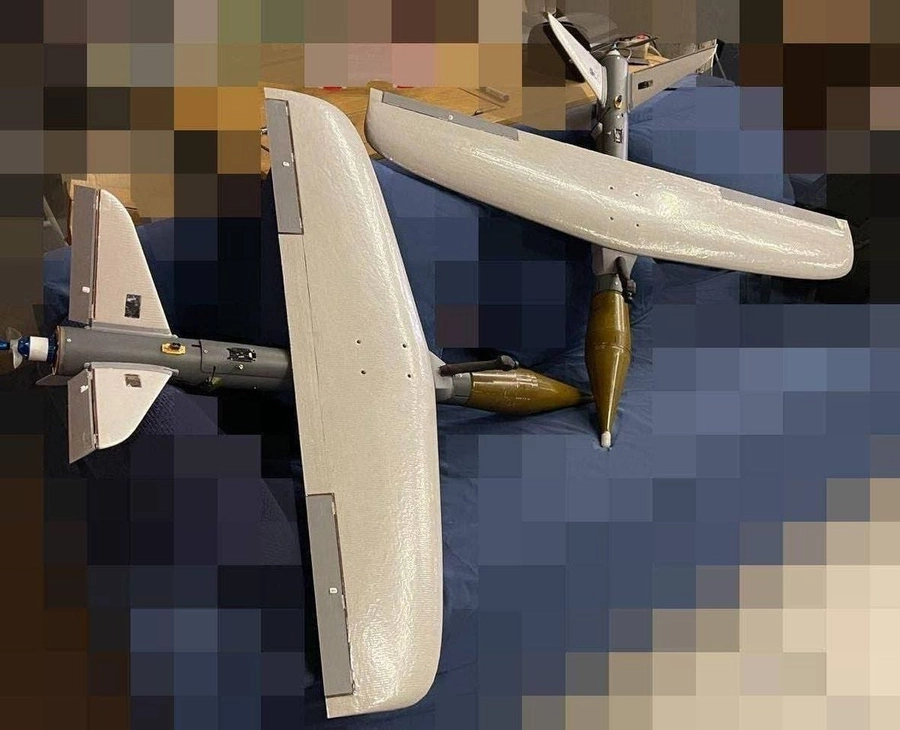The following is a semi-regular round-up of musings from Kyiv Post defense correspondent, Stefan Korshak. You can read the original here.
There’s been all manner of news and developments in the last week and change, a goodly chunk of it positive and I expect most of you are aware.
JOIN US ON TELEGRAM
Follow our coverage of the war on the @Kyivpost_official.
But for me personally, the most significant event recently was (yet another) Russian ground attack, this time around Novomykhailivka, which is pretty near Maryinka in Donbass.
It took place on Jan. 30. In scale it wasn’t giant, at least a dozen armored vehicles, and the tactics used by the Russians were bog-standard, i.e., drive out into the open, suck up Ukrainian return fire, and accept losses in exchange for getting infantry a bit further forward, so that that Russian infantry can start digging in.
Once dug in, the idea is, the process repeats itself. It seems like the Russians sent out about a dozen armored vehicles and every one of them was destroyed.
Additional footage of the absolutely disastrous Russian mechanized assault south of Novomykhailivka a few days ago (thread).
— OSINTtechnical (@Osinttechnical) February 3, 2024
Seen here, before reaching the front, the Russian column gets mixed up, causing a pair of T-72s to crash, which completely disables one. pic.twitter.com/QIO4eOX0yB
Here’s a write up on the attack, which by many standards failed but the Russians do appear to have pushed a few dozen infantrymen somewhere between 500–900 meters westward.
Why significant? For me it was the data available. We can only speculate on the reasons, but this attack was accompanied by/followed with a much-more-than-usual wave of debate, discussion, Telegram posts, videos, from both sides.
There is ample information from the Ukrainian army, the Russian army, Ukrainian mil-bloggers, Russian mil-bloggers, and geo-located video from both sides.

Russian Citizens Launch Campaign to Find Loved Ones Behind Front Lines
All sources are in agreement: Practically all Russian combat losses — and there were a lot of them — were inflicted by a quadcopter with an explosive zip-tied to it.
The (latest) Battle of Novomykhailivka for me was important because it confirmed, with sufficient data that I can point to it and use what the data shows to back up my conclusion, that yes, in Ukraine we are witnessing a military technological revolution. Right now.
Small drones carrying explosives have become so ubiquitous, and so cheap, and operators are becoming so practiced, that we can see that technology, at this very moment, on real battlefields with real battlefield results, supplanting conventional (and often orders-of-magnitude more expensive) weapons like anti-tank missiles, mortars, aircraft firing precision-guided munitions and, to a lesser extent, even artillery.
Now for the qualifications.
I’m not to the point of declaring we are watching a tech change on par with the introduction of the tank. Not yet anyway. It’s apples and oranges when you start talking ranges, and likewise size of explosion. Conventional artillery obviously isn’t going to get replaced if you need a massive explosion in a general area more than, say, three kilometers behind the front lines.
In general, these little drones at best tote an explosive comparable to an 81/82mm mortar shell. (Attached photo illustrates).
A 155mm cluster munition can cut down every man standing over the area of football field, or even two. Even if packed with ball-bearings (which is happening) a drone-carried explosive can near-guarantee it will kill or seriously wound a man over an area the size of several car parking spaces.
So artillery shells are still a lot more powerful, blast-wise, than the stuff carried by drones.
But the bottom line, in this war, the way it looks to me, is that a drone team of four Ukrainian former computer geek guys riding in a crappy van with 40–50 attack copters and a couple of flight controls and directional antennae aboard, by being able to see the battlefield and being able to pick exactly where they want to fly each individual explosive, by pretty much any measure can deliver more precision-guided firepower, within 2–4 kilometers of the front line, than any other weapons system out there, for a fraction of the price.
By some standards, these dinky drones are on a path to make artillery — you know, the King of Battle, the single most lethal weapons system for the last 150 years — partially obsolete.
Already, you can make the argument that it makes little sense to equip an infantry unit with mortars. You can do the same job, cheaper and with orders of magnitude more precision, with less weight and more mobility, with FPV drones. No heavy tube to hump. No base plate, no tripod. No time lost shooting azimuths, sighting in. A lot less time spent prepping for fires. No frenzied packing up after a shoot worrying about counter-fires. Just get back in the van and drive away.
Same deal with anti-tank rockets and even some guided missiles. Way less cost, less training time, orders of magnitude less risk to the firer, even a greater scale advantage in target acquisition and engagement envelope, and when they have it, exactly the same armor-piercing warhead.
Again, please reference the attached image. Those are RPG anti-tank munitions, or a warhead pretty much exactly like it, strapped to those drones.
This is the present. A precision-guided anti-tank round, probably with a range of 5 km. or less, ballpark price probably $500. Although as mass production cranks up that number is going to go down.
One of the big problems with anti-tank rockets and missiles is if the tank sees the smoke from the shot then the tank can get mad and angry tanks shoot back and they have nasty cannon and machine guns. Drone operators flying anti-tank missions just let the robots take the risks.
If you compare our van of Ukrainian drone guys with a conventional 155mm NATO-standard howitzer firing $100,000/shell precision-guided round, thumbnail, for the price of a single 155mm shell like that, if you do the math, the Ukrainian drone guys will deliver 50–100 times — yes, you read that right — more precision-guided firepower.
An FPV drone pilot in this war picks not just the vehicle but where on the vehicle: — directly on the engine deck of a T-72, on the roof armor of a BMP, or into the lap of a Russian infantryman in a trench. Not every drone hits perfectly but it’s clear that if three drones are thrown even at a moving vehicle, one will hit.
This advantage is not taking into account the cost of the 155mm artillery piece, the support vehicles, the logistics needed to move around the 155mm ammunition, the training of the 155mm crew, the politics the Ukrainians have to go through to convince the Western ally that it’s politically safe to help the Ukrainian military out with the 155mm system, or find the Western taxpayer money to sustain that system.
We are seeing 155mm barrels wear out, consistently, after firing 300–500 shells. For the price of just one replacement 155mm barrel, provided it could be sourced and delivered, and assuming the thing costs let’s say five million bucks, at least theoretically the Ukrainians can probably build TEN THOUSAND FPV drones.
Again, let’s take a breath, this is not to say the Ukrainians have the operators or frequency bandwidth to field all that. My intent here is not to argue that the past is over and everything from this point forward will be absolutely new, so forget history.
Rather, it is to argue that we are witnessing a sea change in land warfare military technology, specifically, an orders of magnitude reduction in the cost of short-range, precision-guided munitions.
The armies won’t adapt overnight, completely. That will take time, militaries are conservative (although by necessity the UAF less so). Remember how long, for instance, cavalry survived in the armies of the world, following the introduction of the rifled musket. Or battleships in navies. Or manned aircraft in air forces. Big business drives arms acquisitions in most militaries in most countries. I’m not a corporate guy, but I for one can’t see how Raytheon or Rheinmetall could make a ton of money off FPV drones.
But the future is arriving. The changes are in progress now. We can see them and we can document them. It’s real.
Here’s a KP story pointing out that trend, in more conventional news language.
And here’s a KP story pointing out how drones are, no matter what we think about them as the future or no, filling real gaps in UAF firepower, right now (which is, BTW, another strong point in favor of the argument that dinky drones are becoming a serious weapon of war):
This is the future. This is an anti-armour munition with wings. Since it has wings it will fly further. It might well be cheaper than a quadcopter.
At some point, remote-controlled individual munitions are going to have a longer range than conventional artillery, and if you believe the NATO shell manufacturers for every 155mm shell you can buy ten of these little jobbies.
If and when the range of these things starts matching artillery, modern war is going to get turned upside down.
General Zaluzhny — in or out?
As many of you will have seen there is all manner of Sturm and Drang and hankerchief-twisting in progress right now, as President Zelensky and his civilian buddies sort out, with General Zaluzhny and his military buddies, exactly who is in charge of what in this war on the Ukrainian side, what war strategies are possible, and ultimately, who gets to be responsible if things go well or badly.
I’m not sure if this is one of the things Zelensky and Zaluzhny are arguing about, in a recent CNN op-ed piece Zaluzhny held forth on war strategy and if you want to read the tea leaves a certain way dinged Zelensky on putting political expediency ahead of hard-nosed war aims. Here’s a link to a break-down and the link to the article is there.
I am of course very curious if Zaluzhny cleared talking to CNN with the President and the executive branch, for whom, we should always bear in mind, Zaluzhny is a direct subordinate. Kind of doubt it but don’t know.
What leaped out to me, rather, is that Zaluzhny is on the same page as the overall Ukrainian conventional military wisdom, which is that drones are the future, full stop. I mean, the man says “military revolution” and mentions drones, specifically, twice.
For the record, a sub-section of the Ukrainian military chattering class has been saying the same thing for quite a while. But if a guy like Zaluzhny says convert to drones or die and that the sooner everyone shifts paradigms and takes that on board, the better, well, it’s pretty hard to argue the guy doesn’t have real world experience to back up his thinking.
The other point I would make is, no matter whether Zaluzhny stays in his job or not, never mind how military-civilian relations are sorted out in Ukraine, a reality everyone has to deal with is that if UAF soldiers are asked whom they like more, Zaluzhny or Zelensky, the evidence is absolutely clear – it ain’t the President.
Just like anywhere else where people vote, in Ukraine elected officials rarely stay popular long and if things are bad the head politician is blamed. That Zaluzhny called off the big bloody attacks around Robotyne in the south, because NATO tactics and equipment or no it was piling up casualties, is widely known and appreciated across the UAF. Zaluzhny’s reputation in the army is that he is a tough guy and won’t be pushed around, but he’s not going to sign up to throw away soldier lives.
This is not to say I’m predicting a military coup in Ukraine, or insinuating he’s a Caesar standing by the vanguard of 10th Legion at a ford across the Rubicon River.
Rather, I just point out that if Zelensky wants to shift Zaluzhny, he, Zelensky, faces the real political problem that replacing Zaluzhny could be very politically damaging. In Ukraine, soldiers vote, their relatives vote, and the media is pretty independent and gets to pick and choose which public figures are newsworthy, and how.
Any military failure or problem, post Zaluzhny, would be the President’s fault, full stop. Besides Zelensky’s personal political future, my opinion, the President understands this really is an existential fight for Ukraine’s survival, and he knows public support of war policy is literally a matter of Ukrainian national security. He’s read his history, he’s a smart guy, he knows Ukraine can’t sustain a war effort if the people aren’t behind it.
Not saying Zelensky won’t do it. But the reality is there’s a war on and it’s not like Zelensky can just pick commanding generals like entrees off a restaurant menu, without worrying about the repercussions. It will be interesting to see how this plays out and, particularly, how it gets framed by Zaluzhny and Zelensky further down the line, because maybe not everyone will get a Rubicon reference, but those two absolutely would.
Here’s a KP article sampling troop views on the stand-off, anecdotal data but I’d say representative. None of the soldiers I talked to was panicking.
You can also highlight the text and press Ctrl + Enter












